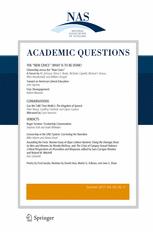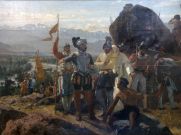George Santayana (1863–1952) was born in Madrid, Spain, to an American mother and Spanish father. He spent his formative years in Boston, attending Boston Latin and then Harvard for his undergraduate and graduate degrees. He stayed on and taught philosophy at Harvard for about fifteen years, leaving for good in 1912. For the remaining forty years of his life, Santayana was a sort of vagabond man of letters in Europe, mostly Italy. At his death, he left behind a remarkably large and diverse body of writing: poetry, plays, philosophical treatises, works on aesthetics and political theory, an autobiography and a Book-of-the-Month Club-nominated novel, among many other writings. Despite the fact that he was surely one of the most interesting minds America ever produced, distinguished by his surpassing good taste, breadth of knowledge, and delightful prose, no one reads him nowadays.
This volume is intended to address this unjust neglect and promote Santayana as a thinker with something vital to contribute to American intellectual life. James Seaton, professor of English at Michigan State University and the volume’s editor, has selected two of Santayana’s short writings on America as a way to introduce him to contemporary audiences.
What are the prospects for the life of the mind in the New World? This is the central question of “The Genteel Tradition and American Philosophy” (1911) and Character and Opinion in the United States (1920). Santayana offers a variety of observations about American mores in these works, but the unifying theme, to which he always seems to trace his way back, is what’s holding back philosophy in America.
In “Genteel Tradition,” Santayana claims that America presents the fascinating spectacle of “a young country with an old mentality,” or rather a country possessing “two mentalities,” one young, one old. In practical affairs, Americans are “spontaneous,” “adventurous,” all good cheer and “aggressive enterprise.” But in theoretical matters American character and opinion is dramatically different, for there what Santayana calls the “genteel tradition” reigns ascendant. This refers to the fact that “[i]n all the higher things of the mind—in religion, in literature, in the moral emotions—it is the hereditary spirit that still prevails.” American intellectual attitudes are old-fashioned and strikingly deferential to polite, establishment opinion. However hospitable America may be to those whose ambition extends towards commerce or politics, it is disappointingly inhospitable towards the philosophically ambitious.
This volume also includes essays by University of Tennessee at Chattanooga history professor Wilfred M. McClay, Vanderbilt University philosophy professor John Lachs, and editor and critic Roger Kimball, as well as Seaton, all of whom argue, in different ways, for the benefits of reading Santayana today. Seaton explores Santayana’s concept of the “genteel tradition,” the peculiar character of Santayana’s liberalism, and claims that, ultimately, Santayana “argues that the American way of life, with all its flaws, nevertheless provides an example worthy of emulation throughout the world.” Lachs discusses the importance of prosperity to modern liberalism, and emphasizes Santayana’s appreciation for the modern virtues of tolerance and individual liberty. McClay and Kimball stress the immediate appeal of Santayana’s charming prose. McClay, Kimball, and Seaton speculate that one of the main causes of the neglect of his writings is also one of Santayana’s main virtues, indeed the main virtue, namely the dispassionate or “detached” quality of his thought.
Santayana’s detachment gave him a fresh perspective on the world that his more public-spirited peers lacked, but it also caused many people to dismiss him as coldhearted. This reaction was not entirely unjustified. Santayana’s detachment likely contributed to his rather weak record in assessing the seriousness of certain threats to liberalism in the twentieth century. Santayana was definitely a liberal in terms of his political principles (more on this later), but his views on fascism and its crimes were at times a bit too detached, to put it generously. These views are expressed outside of “Genteel Tradition” and Character and Opinion, but it is entirely appropriate to mention them here, because they, along with the fact that Santayana once referred to the Declaration of Independence as a “salad of illusions,” will continue to be liabilities in the effort to restore his reputation.
Of what relevance are Santayana’s writings to the current crisis in liberal education? Again, his central concern in these works is with the life of the mind in America, and the most obvious way for any society to cultivate the life of the mind would seem to be by means of its colleges and universities. Some of the most interesting parts of this volume are Santayana’s discussions in Character and Opinion of the students, faculty, and administration at Harvard around the turn of the twentieth century.
Santayana declares his resignation to the fact that, well, universities have rarely ever been good for philosophy. “That philosophers should be professors is an accident, and almost an anomaly,” he writes. He impishly suggests that aspiring philosophers would do better to earn their living in “some unfrequented museum, selling the catalogues and taking in the umbrellas” rather than teaching philosophy in a university. Or, if they find that they must teach, philosophers should teach some system that’s charming but too obviously wrong to take seriously—like that of Plato or Aristotle (his examples). Santayana himself left his position at Harvard as soon as it was financially possible.
Reading Santayana helps limit one’s nostalgia for pre-1960s American academia, or at least put it into perspective, but this is not to say that his take on late nineteenth-century American academia is completely negative. As is the case with many of Santayana’s observations of American culture, his affection for the topic shines through even when he is at his most critical. During his time there, Harvard boasted as faculty the two brightest stars in the American intellectual firmament, William James and Josiah Royce. Santayana was clearly fascinated with James and Royce: he devotes nearly half of Character and Opinion to their thought and personalities.
Santayana also found his students refreshingly unsophisticated, good-humored, and strong, typical of his characterization of the nation as a whole. (Aside: he claimed that Harvard’s undergraduates were, on average, much smarter than its graduate students.) His main critique of Harvard is that it did not do more for its students. It’s not that they were harmed by their experience as students, exactly, but that they were not enough improved or deepened by it. And if students fail to acquire any philosophy during their brief period of undergraduate freedom, they probably never will. The strenuous yet prosaic demands of American business life easily extinguish any philosophic spark.
There are obvious differences between higher education today and in Santayana’s era, when a significantly smaller percentage of American society attended college and campus life was less wildly unrestrained. (Rarely have college students been exemplars of moral restraint, but I Am Charlotte Simmons could not have been written in the 1890s.) Despite these differences, Santayana’s discussions of higher education are relevant. One crucial lesson is that it may be difficult to reform higher education without reforming society. Universities are large, corporate endeavors that need funding and other protections and are thus inevitably captured by external society and the reigning orthodoxy. According to Santayana, universities are inevitably derivative: the moral and intellectual shortcomings of academia are ultimately rooted in society’s shortcomings.
Santayana held firm views on the underwhelming character of American intellectual life, but he was no snob. It was for him a matter of philosophical principle to appreciate skyscrapers, democratic self-government (despite his disparaging reference to the Declaration of Independence), and in several places he expresses admiration for the terrific American sense of humor. Neither was he a reductionist, despite being an equally firm philosophical materialist. Santayana takes America as it comes, and strives to appreciate it with affectionate detachment.
Santayana says that a distinctive feature of the American character is its “singular preoccupation with quantity.” Americans tend to think that more is better: quantity has replaced quality as the standard of the good. “The President of Harvard College [Charles Eliot],” he wrote, “seeing me once by chance soon after the beginning of a term, inquired how my classes were getting on; and when I replied that I thought they were getting on well, that my men seemed to be keen and intelligent, he stopped me as if I was about to waste his time. ‘I meant,’ said he, ‘what is the number of students in your classes.’”
What accounts for this elevation of quantity above quality in America? For one, Americans are deep believers in progress, and Santayana believes that modern progressivism inevitably carries a bias towards quantitative standards of the good: “Those who speak most of progress measure it by quantity and not by quality; how many people read and write, or how many people there are, or what is the annual value of their trade; whereas true progress would rather lie in reading or writing fewer and better things, and being fewer and better men, and enjoying life more.” (Think of President Obama’s demand that America lead the world in the number of college graduates by 2020, with no reference to improving the content of higher education.)
Santayana says that all value judgments about (intellectual or moral) quality are rendered suspect by the “democratic conscience” and its leveling tendency. As relativism renders men less and less able to agree about quality, quantity inevitably comes to function as a standard or “common denominator.”
But, in a perfect example of Santayana’s ability to appreciate aspects of the American character that others would either dismiss or look past, he says that the attachment to quantity is also caused by a fundamental optimism. “Respect for quantity is…something more than the childish joy and wonder at bigness; it is the fisherman’s joy in the big haul, the good uses of which he can take for granted.” Americans tend to believe that “more is better” because they are so confident in their ability to enjoy and put to good use everything that they acquire. This is clearest with respect to money: Americans acquire aggregate capital for future ventures, not to hoard for the sake of hoarding.
From a pre-modern perspective, American life seems absurd because it treats what used to be thought of as the means to the good life—money and property—as the end. This is what Leo Strauss refers to as “the joyless quest for joy.” But Santayana looks at things differently. He marvels that the Americans put off considerations about what uses they will put their great wealth towards, because, according to him, they are instinctively confident that these uses exist and that they will find them.
Another interesting discussion is the treatment of “English liberty in America,” the final chapter of Character. Santayana argues that regardless of American underachievement in intellectual matters, with respect to social life America is a highly civilized nation. Driven by the “spirit of free cooperation” that dominates politics and commerce, American civil society essentially runs on its own, with relatively little need for formal political authority and institutions. “English” liberty differs from “absolute” liberty in that it is defined by a submission of the will, as opposed to an assertion of it. Absolute liberty may come in more or less attractive forms (examples Santayana gives include early Christian and Protestant martyrs, primitive man, the American Revolution, the Spartans, the Prussians and Bolsheviks), but if not somehow qualified by English liberty, the desire for absolute liberty tends to issue in either self-destruction or tyranny. It “is impracticable; it is a foolish challenge thrown by a new-born insect buzzing against the universe.”
The mildness of Santayana’s liberal-communitarian political theory stands in sharp contrast to his discussions of philosophy in America. In the latter, Santayana promotes a way of life that he characterizes as radically individualistic, even defiantly selfish. When discussing Harvard at the end of the nineteenth century, Santayana even implies that the keen sense of social responsibility felt by the faculty posed a significant obstacle to their pursuit of philosophy. American philosophy will never get anywhere so long as philosophy professors remain concerned with their duty to train citizens.
But when it comes to politics and civil society, Santayana is as sincerely enthusiastic about compromise, flexibility, and cooperation as he is about radical independence for philosophers. In his political theory, great individuals are less important than the mundane social virtues: “All the declarations of independence in the world will not render anybody really independent. You may disregard your environment, you cannot escape it; and your disregard of it will bring you moral empoverishment [sic] and some day unpleasant surprises.”
In the selections contained in this volume, Santayana does not address the tension between the goods of philosophical independence for the few and the devotion to compromise and cooperation for the many, or suggest a way to reconcile them. This is unfortunate, because it is not obvious that the goods can be reconciled in a way that is satisfactory to both philosophy and society.
Americans have a difficult time appreciating intellectual detachment. The engagé activist disposition seems much more common among contemporary American intellectuals. In light of this, it’s important to contemplate the example of a supremely detached intellectual such as Santayana. His judgment was not unerring and he leaves some important questions unanswered, but Santayana nonetheless provides an instructive glimpse of the freshness of perspective available only to detached, philosophic souls.












